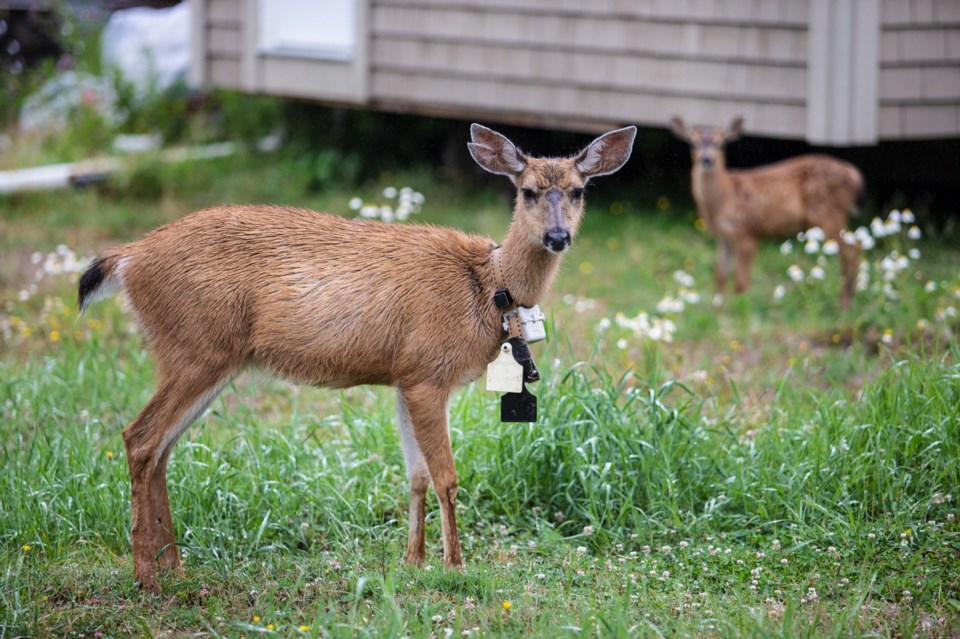Oak Bay residents are clearly keen to clear the way for a deer birth-control initiative planned for this summer, once fawning season is over. More than 150 quickly responded to a request from Oak Bay Mayor Kevin Murdoch this week to register their properties so they’re available to those administering the immunocontraception vaccine to deer.
“In 36 hours, we had 150 properties already signed up and that’s without any news coverage or anything,” said Murdoch, who put out the request on social media.
The goal is to reach as many deer as possible, including those on private land, the mayor said.
“The more land we have access to, the more deer we can get to,” he said.
“Rather than being stuck on the public rights of way and golf courses, we’re trying to see if people are interested in opening up their yards.”
The municipality also wants to know from residents whether there are certain times of day when deer gather in their yards, so the treatment team can schedule times to show up.
Oak Bay is working with the Urban Wildlife Stewardship Society on the program, in which it’s hoped as many as 80 female deer will be given an immunocontraception vaccine, which induces the does to produce antibodies that prevent fertilization.
“In the past when we did other things, they’d knock on the door and ask permission, but it often is time-consuming if they’re not home and they can’t go on,” Murdoch said.
A short-acting tranquilizer gun will be used on the deer while the immunocontraceptive is injected, Murdoch said. The animals will also be tagged so the team knows which ones have been treated. “They wait five or 10 minutes for the deer to wake up and then the deer wakes up and runs off.”
Plans are for a booster shot to be given by dart two to six weeks later. Researchers will then wait until spring to determine the impact on the birth rate.
Oak Bay has been struggling for years to deal with a growing deer population, with residents pointing to the damage deer cause to gardens.
A census report this year pegged the number of deer in Oak Bay at anywhere from 72 to 128.
The population count was conducted by an independent team in co-operation with the district, the provincial government and the Urban Wildlife Stewardship Society.
Researchers collected data on population density and distribution by putting radio collars on 20 does last year, and setting up 39 remote cameras on private and public properties across Oak Bay.
The deer were detected more frequently by cameras across south Oak Bay and around golf courses.
Murdoch said it’s difficult to say how many deer actually live in Oak Bay, however.
Last year, Oak Bay’s public works department picked up 55 deer carcasses off the roads, and that number has been rising consistently each year, he said.
With that kind of a death rate, it’s hard to imagine a total population as low as 78, Murdoch said.
In 2015, the district approved a cull that killed about 11 deer over two years, but that program prompted a backlash from some residents and animal-rights activists.
Murdoch said it’s been a long, frustrating process for residents.
“So now that we’re doing it, I think people are quite keen to help in whatever way they can. It gives them an opportunity to actually participate.”
Murdoch praised Esquimalt’s efforts to try to formalize a process where the core municipalities might co-ordinate deer-contraception efforts.
“I’m hopeful, if the province will let us, that Oak Bay can be the scientific study area, maybe along with Esquimalt, because they are quite a long ways along as well, and then we could maybe expand the program to include Saanich and Victoria as well, so we’re not just doing this in isolation.”



